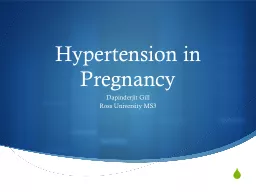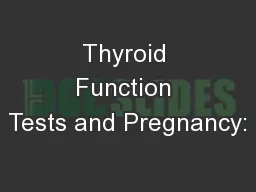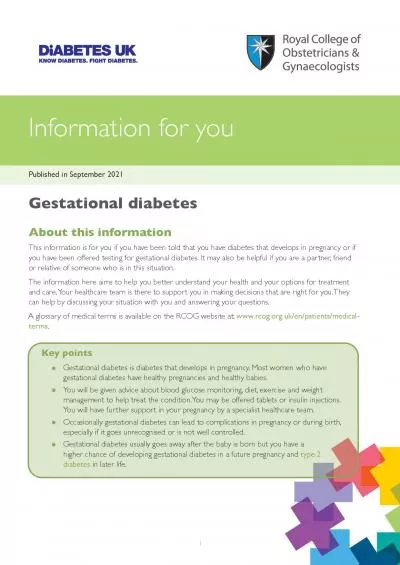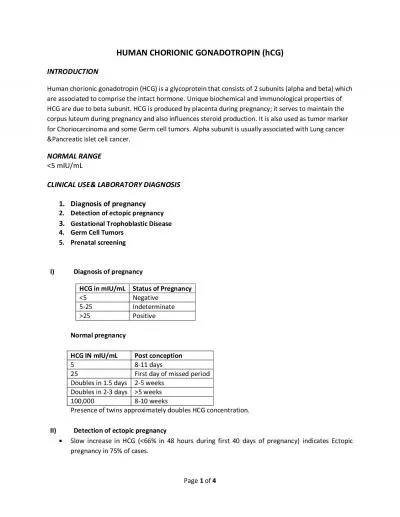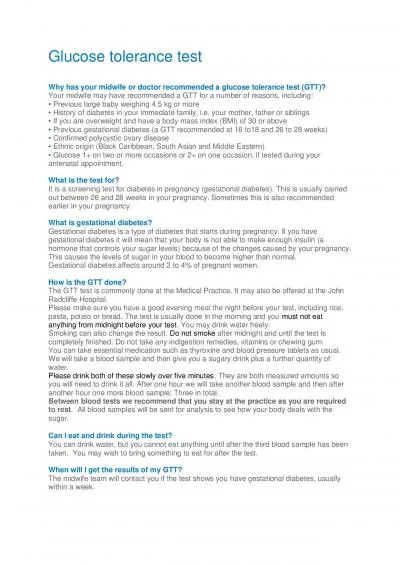PPT-Gestational trophoblastic disease
Author : jezebelfox | Published Date : 2020-06-13
Raghad farajat Introduction Gestational trophoblastic diseases GTD include 1 hydatidiform moles both complete and partial 2 invasive moles 3 choriocarcinoma
Presentation Embed Code
Download Presentation
Download Presentation The PPT/PDF document "Gestational trophoblastic disease " is the property of its rightful owner. Permission is granted to download and print the materials on this website for personal, non-commercial use only, and to display it on your personal computer provided you do not modify the materials and that you retain all copyright notices contained in the materials. By downloading content from our website, you accept the terms of this agreement.
Gestational trophoblastic disease : Transcript
Raghad farajat Introduction Gestational trophoblastic diseases GTD include 1 hydatidiform moles both complete and partial 2 invasive moles 3 choriocarcinoma They typically arise from the abnormal . How do I know if I am at risk You are at risk for gestational diabetes if you Had a previous pregnancy with gestational diabetes Had a baby born weighing over 9 pounds Are overweight or obese Are more than 25 years old Have a family history of We deal with two lives but multiple emotions.. We care for the health of two generations at a time.. We witness pain and pleasure and life and death on the same table at the same time.. Watchful expectancy and masterly inactivity – is it always so?. Hannah Watson, MD . Maternal Child and Reproductive Health Fellow . September 7, 2016. Disclosures. I have nothing to disclose . Objectives. At the end of this lecture, you should be able to: . Define gestational diabetes, overt diabetes of pregnancy, diabetes mellitus type II . Dapinderjit Gill . Ross University MS3. Hypertension Disorders in Pregnancy. Gestational HTN. Transient HTN of pregnancy. Preeclampsia. Mild. Severe. Eclampsia. Chronic HTN preceding pregnancy. Chronic HTN with superimposed pregnancy-induced hypertension. AUTHOR FIRST, MD, AUTHOR SECOND MD and LAST AUTHOR MD. Department of Medicine. Jersey Shore University Medical Center, Neptune NJ. Discuss the impact of normal pregnancy on thyroid function tests (TFTs). . :. . Challenges in diagnosis and therapy- . of import to the Neonatologist. Robert S. Egerman, MD, FACOG. Professor. Obstetrics & Gynecology, Maternal Fetal Medicine. Medicine, General Internal Medicine. - Brigette Pereira and Natalie . Wowk-Slukynsky. , First Nations and Inuit Health Branch. What is Diabetes?. Diabetes is a disease where your body is not able to properly control the amount of sugar in your blood. . PhD candidate, Department of Animal sciences, Faculty of Biological Sciences, Kharazmi University, Tehran, Iran. in previous studies. Mild maternal hyperglycaemia inducedby streptozotocin causes foet 366 Placental site nodule (PSN) is a non-neoplastic infrequent lesion originating from the intermediate trophoblast, which theoretically represents a non-in-voluted portion of placental tissue. This l 1 This information is for you if you have been told that you have diabetes that develops in pregnancy or if you have been offered testing for gestational diabetes. It may also be helpful if you are a Page 1 of 4 h CG) INTRODUCTION Human chorionic gonadotropin (HCG) is a glycoprotein that consists of 2 subunits (alpha and beta) which are associated to comprise the intact hormone. U nique bioche Glucose tolerance test Why has your midwife or doctor recommended a glucose tolerance test (GTT)? Your midwife may have recommended a GTT for a number of reasons, including: • Previous large baby w . Dr. Zahra . Ghasemzade. Endocrine Fellow. Research Institute Of Endocrine Sciences . Shahid. . Beheshti. University Of Medical Science. Tir. 1394 – July . 2015. 1. Williams text book. 2. 3. 4. Minoo Yaghmaei. Pre gestational diabetes. impact on pregnancy. Serious complications in embryo, fetus, neonatal and mother. Likelihood of successful outcomes:. Degree of glycemic control. Degree of underlying cardiovascular or renal disease.
Download Document
Here is the link to download the presentation.
"Gestational trophoblastic disease "The content belongs to its owner. You may download and print it for personal use, without modification, and keep all copyright notices. By downloading, you agree to these terms.
Related Documents




